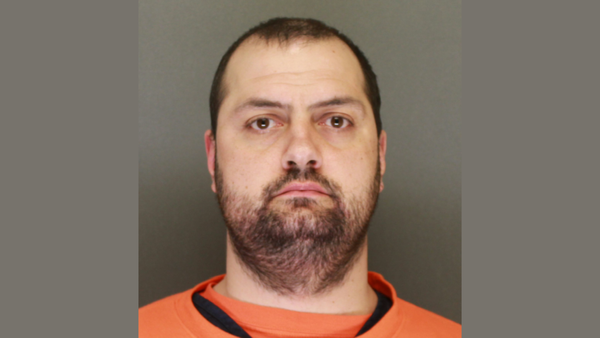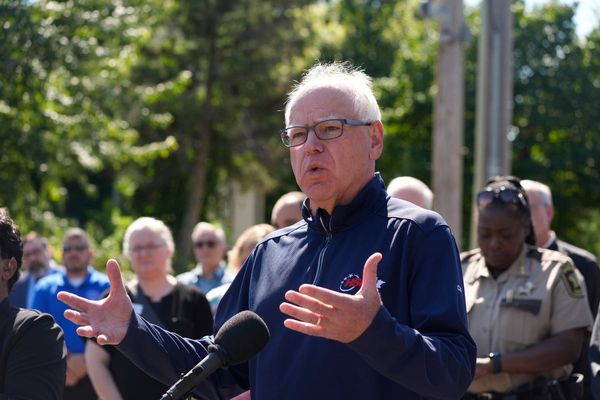
Heading to the finish of Vuelta a España's stage 21, probably the first indication that things were about to go seriously awry for the race was that the finish itself was all but impossible to reach.
"No, you can't go down here," one heavily armed police officer standing at a barrier in a seemingly quiet street in Madrid's plush central district told journalists. This was despite the actual finish being barely a few hundred metres away in the Plaza de Cibeles square, on the same broad boulevard as ever. "Go round another street a bit further on."
Having duly headed round to the next street, the same problem emerged, only this time there were three police officers manning a barrier in the middle of the road. One, seemingly at random, was taking IDs of journalists going through and one reporter bearing a TV camera came in for more intense scrutiny. In any case, the same message was barked back at the journalists – 'Go further round, you can't go through here.'
By this point, the finish line was nearly a kilometre away and, even though the race was still two hours away from finishing, clearly something serious was up. But as can happen in disturbances, turn one corner and you hit trouble; turn another, and rather than stressed-out policemen yelling at reporters for going the 'wrong' way, there is simple normality.
In this case, just a few hundred yards away from the Paseo de la Castellana boulevard, where the race would end on Sunday – in theory, if not in practice – tourists were taking selfies of themselves against the backdrop of one of central Madrid's biggest attractions, the Parque del Prado. As for the police, there was just one lone local policeman handling the traffic, and the scene was one where only the exceptionally warm weather seemed out of place. Then a message crackled through by chance on the policeman's radio just when Cyclingnews was passing that made it clear something was up – 'They've broken through in Callao', a square on the far side of the usual 6.2 kilometre finishing circuit in Madrid.
As it turned out, this was a reference to one of the first flashpoints of the disturbances that caused the cancellation of the stage. As a reporter for state television RTVE commented later, a coordinated movement by "dozens" of protestors on both sides of one of Madrid's biggest avenues, the Gran Via, showed them breaking down the barricades on both sides of the boulevard near Callao. This, however, only emerged considerably later, by which time almost all the barricades had gone the same way.

Back on the finishing circuit, having finally found a way to get to the side of the race, albeit a long way from the meta, the tension was visibly mounting. In a park close to Atocha railway station at the southern end of the finishing circuit, hundreds of protesters were chanting their slogans and attacking the Vuelta for allowing Israel-Premier to continue to race. Some demonstrators stood on stone benches to get a better view of the route, others simply waved their flags, yet more presented bigger banners: all were denouncing the ongoing Israeli military action in Gaza and its consequences.
Above them, a giant screen improbably showed the peloton, pedalling unperturbed across the countryside outside Madrid. They were unaware of what awaited them, and the images flashed across the display showed riders on the point of ending their Vuelta that were going through the usual final-stage larks of squirting water pistols at each other, or pretending to attack. Others celebrated with champagne glasses or lined up across the road to have their photos taken.
Were it not for the huge crowd of protestors – and these were only part of the main demonstration – chanting 'Re-Vuelta! Re-Vuelta [Revolt! Revolt!] underneath the giant screen, it could have been a normal stage 21. As it was, this was anything but. As the unusually warm afternoon wore on, smoke from flares curled slowly through the trees and down to the side of the race as the 500-metres-to-go sign was gradually rocking more and more dangerously back and forth. Slowly but almost imperceptibly, the barriers were being pushed forward into the broad boulevard. One race vehicle squeezed through, greeted by whistles and derogatory cheers, but others were barely able to make it. In the distance, there was a long line of blue-clad police, riot shields at the ready and with police vehicles flashing their lights behind, as they stood close to the finish.
The gradually collapsing barriers were ominous and the words from one race commentator as he quickly walked past said it all - "I'm going down to tell my wife to get out of there, it's about to kick off". A few hundred yards down the long street, police van after police van could be seen in the distance, hurtling past the seemingly oblivious tourists taking their selfies in the Parque del Retiro and heading towards an increasingly tumultuous finish.
From here on, rather than watching it directly, it seemed far wiser to view the unfolding situation from a safe distance, with the TV footage providing images of how the afternoon unfolded: barriers being thrown at police, others being piled up in the streets, VIPs being rushed away, reporters with cameras rushing down side streets, sit-ins on the finish.
The chaos was clearly taking over the Vuelta.
Helicopter shots showed one race sign slowly and purposefully being dismembered by various protestors. At one point in Cibeles, a huge publicity balloon, loosened by protesters, bounced its way across the route, with the line of police reforming around it. Meanwhile, in a park on the outskirts of central Madrid, the riders, already blocked by another group of protesters, headed towards their team cars, their Vuelta abruptly over.
Many of the demonstrators, it has to be underlined, did not cause any disruption at all, and government estimates placed their total numbers on Sunday at roughly 100,000. But those who had opted to dismantle the barricades and, in some cases, throw objects at the police, threatened to turn parts of the protest into a major disturbance. As of 9 p.m. Spanish time, there were just two arrests reported, with 21 police injured. By 9PM, roughly a hundred demonstrators remained in Cibeles, with six large police lorries and a line of riot police facing them. The last live images showed the police slowly but surely moving them onto the pavements and clearing the roads.
The protest was all but over, though the water from the fountain in Cibeles remained backlit in bright red – a sad reminder of the colour of the Vuelta a España's leader's jersey and the joyful celebrations that should have filled that same square.
As one reporter wryly put it, "Today, there was no final fiesta for the Vuelta."








